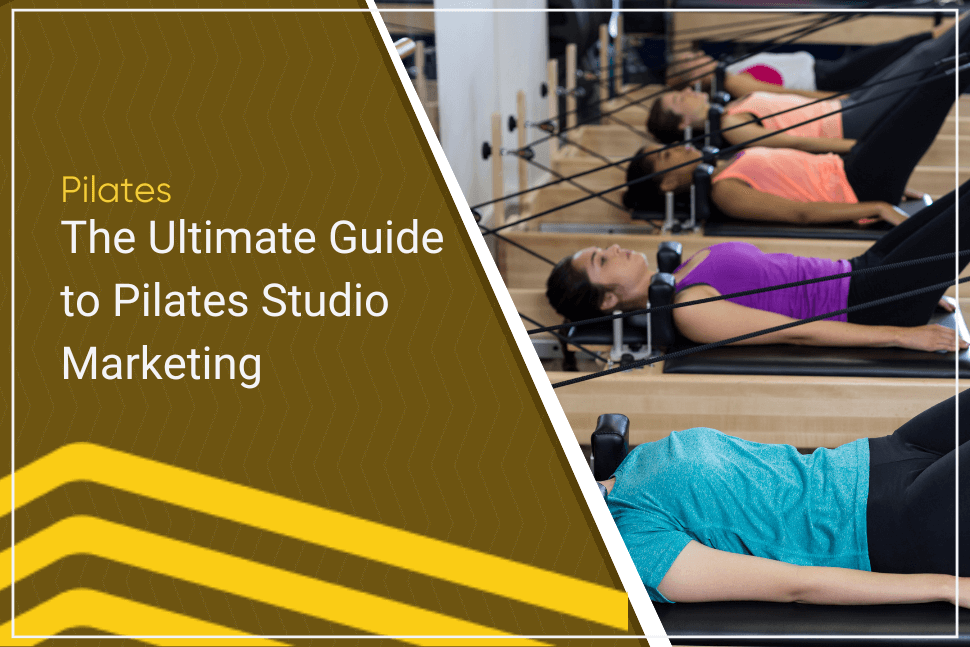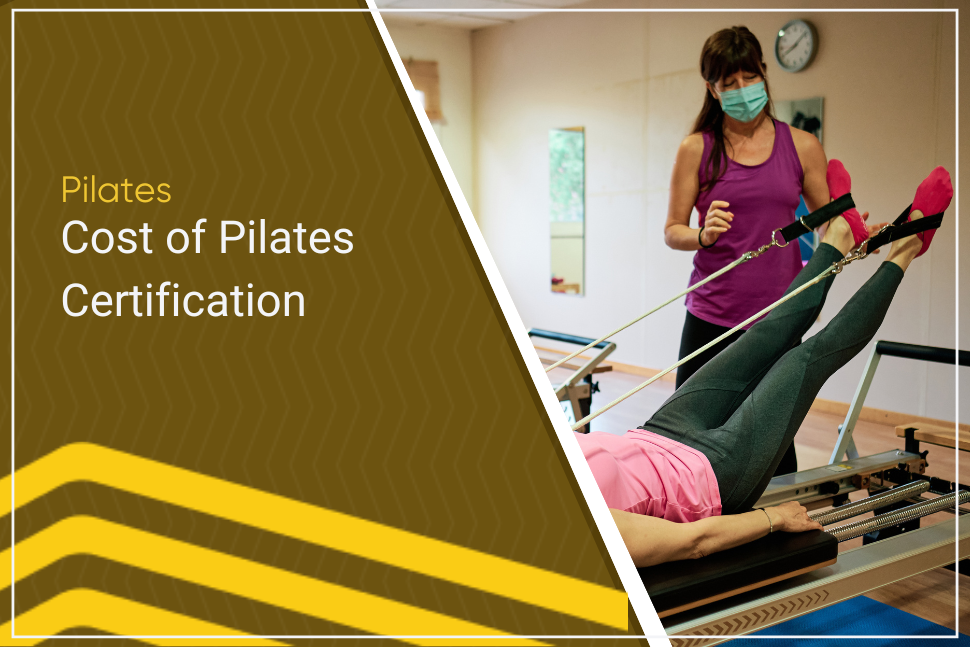Yoga and Pilates are two extremely popular forms of exercise that promote mind-body connection, low-impact exercise, and an emphasis on slow, controlled movement.
The two types of people who take yoga and Pilates overlap significantly, so combining them into a complementary fitness class program makes a lot of sense business-wise. But it also makes a lot of sense for combining the health benefits of both.
In this article, we’ll explore the differences and similarities between pilates and yoga, identify the benefits of combining them into a single program, and then present specific ways to mesh pilates and yoga into a single, cohesive workout.
Why Yoga & Pilates Go Together
Adding Pilates to your yoga class is a bit like taking creatine before your workout: it will make the session more productive, more focused, and more time efficient. Here are five specific ways Pilates can improve your yoga classes.
Pilates Helps Yogis Better Engage Their Core
Pilates can help yogis improve their core engagement. Core engagement is a fundamental aspect of both Pilates and yoga, and incorporating Pilates exercises into a yoga practice can help yogis strengthen their core muscles, improve posture, and enhance stability in their yoga poses.
Pilates places a strong emphasis on isolating and engaging the core muscles, such as the transverse abdominis and the obliques, through exercises that challenge stability and balance.
By incorporating Pilates-style exercises into their yoga practice, yogis can work on engaging their core muscles in new ways and improve overall core stability.
Pilates Helps Yogis Work the Sides of their Bodies
The side body, including the obliques, hip flexors, and intercostals, is often neglected in many exercise routines. However, stretching and strengthening these muscles can improve posture, stability, and overall flexibility.
Pilates exercises, such as the side-lying leg series, can target the side body muscles, helping to lengthen and strengthen them. These exercises can also be incorporated into a yoga practice, using props such as blocks, straps, or a wall, to enhance the stretch and help improve side body length.
Additionally, incorporating side-body-focused yoga poses, such as the triangle pose or the side plank, into the practice can help improve overall flexibility and lengthen the side-body muscles.
Pilates Helps Yogis with Bodily Alignment
Alignment is a fundamental aspect of both Pilates and yoga, and incorporating Pilates exercises into a yoga practice can help yogis develop better body awareness and improve their posture.
Pilates exercises often require precise alignment and focus on strengthening the deep core muscles, which play a crucial role in maintaining proper posture and stability. By incorporating Pilates exercises into a yoga practice, yogis can work on improving their alignment, both in their yoga poses and in their daily movements.
For example, Pilates exercises such as the hundred or the single-leg stretch can help yogis develop better alignment and balance, while incorporating Pilates-style breathing techniques can improve body awareness and enhance the connection between the mind and body.
Pilates Helps Yogis Improve Breathing
Pilates emphasizes controlled, mindful breathing and incorporates various breathing techniques into its exercises, which can enhance respiratory control and capacity for yogis. This can also help deepen their mindfulness and awareness of the breath, which is an important aspect of yoga practice. Additionally, Pilates helps strengthen the core muscles, including the diaphragm, which can improve overall breathing efficiency.
Pilates Improves the Strength Training Aspect of Yoga
Pilates focuses on strengthening the core muscles, which is important in maintaining proper posture and stability in yoga poses. In addition, Pilates also emphasizes strengthening the smaller, supporting muscles, which can enhance overall strength and improve performance in yoga poses.
5 Yoga & Pilates Similarities
Understanding the similarities between yoga and pilates is the first step to designing an effective combined program. Here’s 5 ways in which they overlap:
- Focus on Mind-Body Connection: Both practices emphasize the connection between the mind and body, promoting relaxation and stress reduction.
- Low-Impact Exercise: Both Pilates and yoga are low-impact forms of exercise, making them accessible to people with injuries or physical limitations.
- Improved Posture: Both practices focus on proper alignment and posture, which can help improve posture, reduce back pain and prevent injury.
- Emphasis on Control: Both Pilates and yoga require control and concentration, promoting mental focus and overall well-being.
- Core Strength: Both practices place a strong emphasis on core strength, which can improve stability and balance.
5 Yoga & Pilates Differences
With similarities in mind already, now you must understand the differences. Understanding differences will help you understand how yoga and pilates can complement one another best, filling in any deficiencies.
Here’s five meaningful differences:
- Philosophy: Yoga has roots in ancient Indian philosophy and places a strong emphasis on spirituality, while Pilates is a more modern practice that focuses on physical fitness and rehabilitation.
- Physical Focus: Yoga emphasizes flexibility, joint mobility, and overall body strength, while Pilates places a strong emphasis on core strength, stability, and posture.
- Types of Movement: Yoga movements are often flowing and synchronized with breath, while Pilates movements are more controlled and precise.
- Breath Control: Breath control is an important aspect of both practices, but yoga places a greater emphasis on using the breath to control movement and calm the mind.
- Equipment: While some styles of yoga are performed with props, such as blocks and straps, Pilates is often performed on specialized equipment, such as the Pilates reformer or mat.
- Spiritual Focus: While both practices promote relaxation and stress reduction, yoga places a stronger emphasis on spirituality, mindfulness, and self-awareness.
These differences can also help you understand how the two practices could potentially frustrate each other. WiIth that in mind, you’ll have to decide whether to weigh a particular approach toward yoga or toward pilates.
7 Ways to Combine Pilates & Yoga
The possibilities are endless. What I’ve done here is lay out a framework to combine yoga and pilates into one cohesive program. However, I have some specific ideas for you too.
To help get you started on putting together your own blended program or curriculum, I’ve put together 7 ideas for how to combine both pilates and yoga.
- Warm-up: Begin the class with a warm-up to prepare the body for both yoga and Pilates exercises. This can include gentle movements, such as neck rolls, arm circles, and ankle rotations.
- Incorporate Pilates exercises: After the warm-up, incorporate Pilates exercises into the yoga practice. Some Pilates exercises that are easily adapted to a yoga class include the pelvic tilt, the single-leg circle, and the double-leg stretch.
- Focus on Core Engagement: Emphasize core engagement throughout the Pilates exercises and incorporate core-focused yoga poses, such as the boat pose or the warrior III pose.
- Integrate Breathing Techniques: Integrate breath control techniques from both Pilates and yoga, such as inhaling and exhaling slowly and deeply, or using the breath to control movement.
- Balance and Stability: Incorporate balance-focused exercises and poses from both Pilates and yoga, such as the tree pose or the balance series from Pilates.
- Flow: Use Pilates and yoga exercises to flow from one posture to the next, linking breath and movement.
- Cooldown: End the class with a cool down, which can include gentle stretching, breathing exercises, and relaxation techniques.
How you combine the two depends on your knowledge of how the two disciples complement each other and the goals you have for your students (or that they have for themselves).
Think critically, get feedback from your members, and experiment a lot until you find the right balance of pilates and yoga.
Summary
Adding Pilates exercises into a yoga class can lead to a more balanced and well-rounded workout that can benefit both the body and mind. While we still encourage gyms to offer separate Pilates and yoga classes, by adding a separate Pilates / Yoga mash-up class you will provide an opportunity for your members to improve their core strength, increase flexibility, and achieve a better mind-body connection.
 39 Martial Arts Statistics To Know in 2022
39 Martial Arts Statistics To Know in 2022



